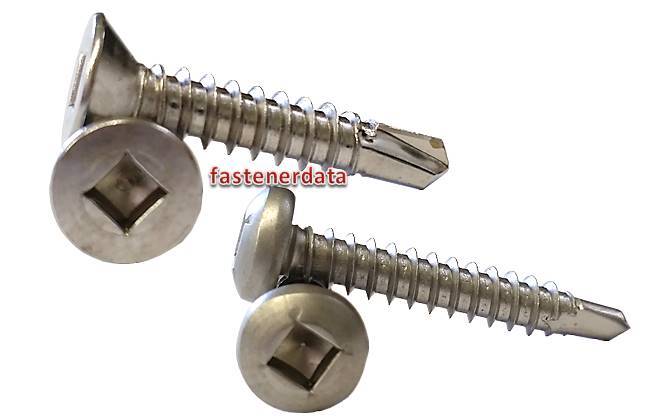Square Drive
under construction
This page contains incomplete information on drives.
a webpage needs to be created for each drive invention and connected to drive pages around the site
spelling has been checked but it needs to be cleared of Plagiarisms

Square Drive
Peter L. Robertson, a young Canadian salesman who invented things in his spare time. His efforts to push an improved corkscrew, innovative cuff links, and a more diabolical mousetrap failed. However, the socket-head screw he patented in 1907 succeeded. It was self-centring, could be driven with one hand, and the driver stayed in the socket. Furniture makers, boat builders, and Henry Ford appreciated the economies to be realized with these screws. In 1908, square-drive screws were invented by Canadian P. L. Robertson. Twenty-eight years before Henry Phillips patented his Phillips head screws, which are also square-drive screws. The Robertson screw is considered the "first recess-drive type fastener practical for production usage." The design became a North American standard, as published in the sixth edition of Industrial Fasteners Institute Metric and Inch Standards. A square-drive head on a screw can be better than a slot head because the screwdriver will not slip out of the screw's head during installation. The Model T car made by the Ford Motor Company (one of Robertson's first customers) used over seven hundred Robertson screws. Phillips Head Screw
In the early 1930s, the Phillips head screw was invented by Henry Phillips. Automobile manufacturers now used car assembly lines. They needed screws that could take greater torque and could provide tighter fastenings. The Phillips head screw was compatible with the automated screwdrivers used in an assembly line. Ironically, there is a Philips Screw Company that never made Phillips screws or drivers. Henry Phillips died in 1958 at the age of sixty-eight.
Allen Key
A hexagonal or hex screw head has a hexagonal hole turned by an Allen key. An Allen key is a hexagonally shaped wrench. The Allen key may have been invented by American, Gilbert F. Heublein, however, this is still being researched and should not be considered a fact. Heublein was an importer and distributor of foods and beverage, Who in 1892 introduced "The Club Cocktails", the world's first bottled cocktails. Screwdriver
In 1744, the flat-bladed bit for the carpenter's brace was invented, the precursor to the first simple screwdriver. Handheld screwdrivers first appeared after 1800. Modern screws employ a wide variety of drive designs, each requiring a different kind of tool to drive in or extract them. The most common screw drives are the slotted and Phillips; hex, Robertson, and TORX are also standard in some applications. Some types of drive are intended for automatic assembly in mass-production of such items as automobiles. More exotic screw drive types may be used in situations where tampering is undesirable, such as in electronic appliances that should not be serviced by the home repair person.
Slot head Has a single slot and is driven by a flat-bladed screwdriver. The slotted screw is common in woodworking applications but is not often seen in applications where a power driver would be used, due to the tendency of a power driver to slip out of the head and potentially damage the surrounding material. Cross-head, cross-point, or cruciform has a "+"-shaped slot and is driven by a cross-head screwdriver, designed originally for use with mechanical screwing machines. There are five types: Phillips Has slightly rounded corners in the tool recess and was designed so the driver will slip out, or cam out, under high torque to prevent over-tightening. The Phillips Screw Company was founded in Oregon in 1933 by Henry F. Phillips, who bought the design from J. P. Thompson. Phillips was unable to manufacture the design, so he passed the patent to the American Screw Company, who was the first to manufacture it. Reed & Prince or Frearson Similar to a Phillips but has a more pointed 75° V shape.[citation needed] Its advantage over the Phillips drive is that one driver or bit fits all screw sizes. It is found mainly in marine hardware and requires a special screwdriver or bit to work properly. The tool recess is a perfect cross, unlike the Phillips head, which is designed to cam out. It was developed by an English inventor named Frearson in the 19th century and produced from the late 1930s to the mid-1970s by the former Reed & Prince Manufacturing Company of Worcester, Massachusetts, a company which traces its origins to Kingston, Massachusetts, in 1882, and was liquidated in 1990 with the sale of company assets. The company is now in business. JIS Commonly found in Japanese equipment. Looks like a Phillips screw, but is designed not to cam out and will, therefore, be damaged by a Phillips screwdriver if it is too tight. Heads are usually identifiable by a single dot to one side of the cross slot. The standard number is JIS B 1012:1985 French recess also called BNAE NFL22-070 after its Bureau de Normalisation de l'Aéronautique et de l'Espace standard number. Pozidriv patented, similar to cross-head but designed not to slip, or cam out. It has four additional points of contact and does not have the rounded corners that the Phillips screw drive has. Phillips screwdrivers will usually work in Pozidriv screws, but Pozidriv screwdrivers are likely to slip or tear out the screw head when used in Phillips screws. Heads are marked with crossed, single lines at 45 degrees to the cross recess, for identification. (Note that doubled lines at 45 are a different recess: a very specialised Phillips screw.) Pozidriv was jointly patented by the Phillips Screw Company and American Screw Company in the USA. Developed by GKN in the 1960s, the recess is licenced from Trifast PLC in the rest of the world. Supadriv similar to Pozidriv. TORX a star-shaped "hexalobular" drive with six rounded points. It was designed to permit increased torque transfer from the driver to the bit compared to other drive systems. TORX is very popular in the automotive and electronics industries due to resistance to cam out and extended bit life, as well as reduced operator fatigue by minimizing the need to bear down on the drive tool to prevent cam out. TORX PLUS is an improved version of TORX which extends tool life even further and permits greater torque transfer compared to TORX. A tamper-resistant TORX head has a small pin inside the recess. The tamper-resistant TORX is also made in a 5 lobed variant. These "5-star" TORX configurations are commonly used in correctional facilities, public facilities and government schools, but can also be found in some electronic devices. TTAP an improved "hexalobular" drive for without wobbling and stable stick-fit. TTAP is backward convertible with generic hexalobular (Torx) drive.



